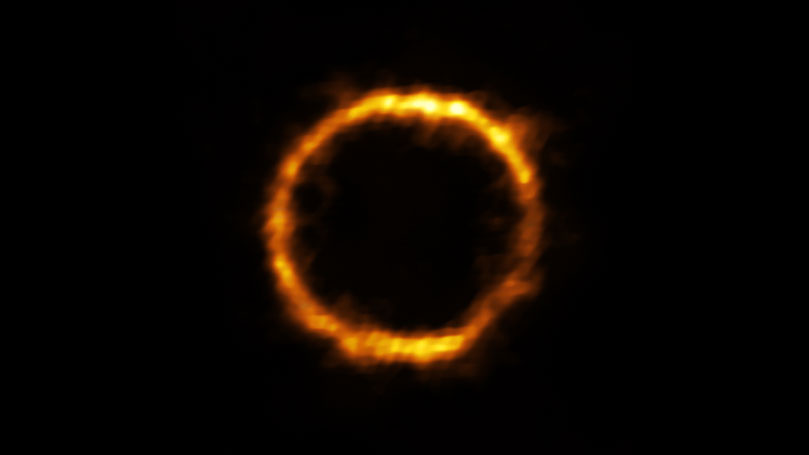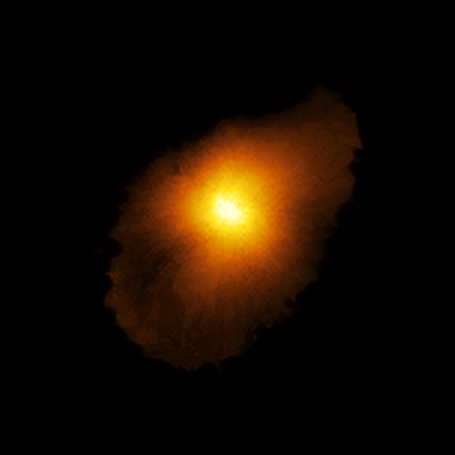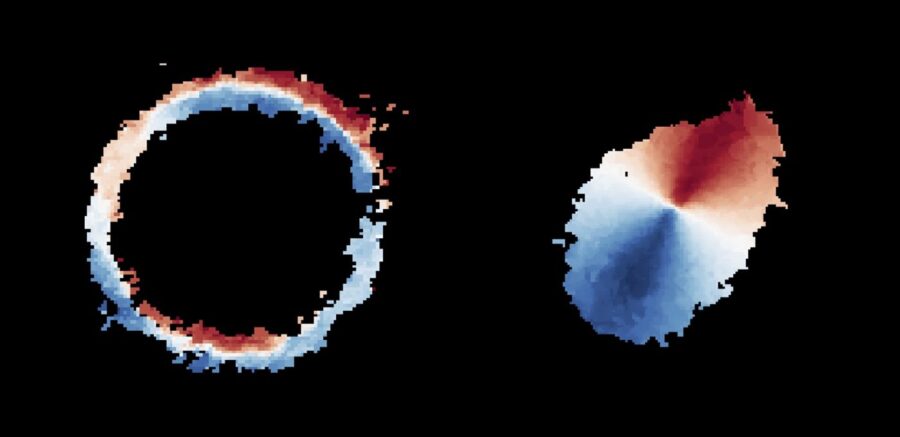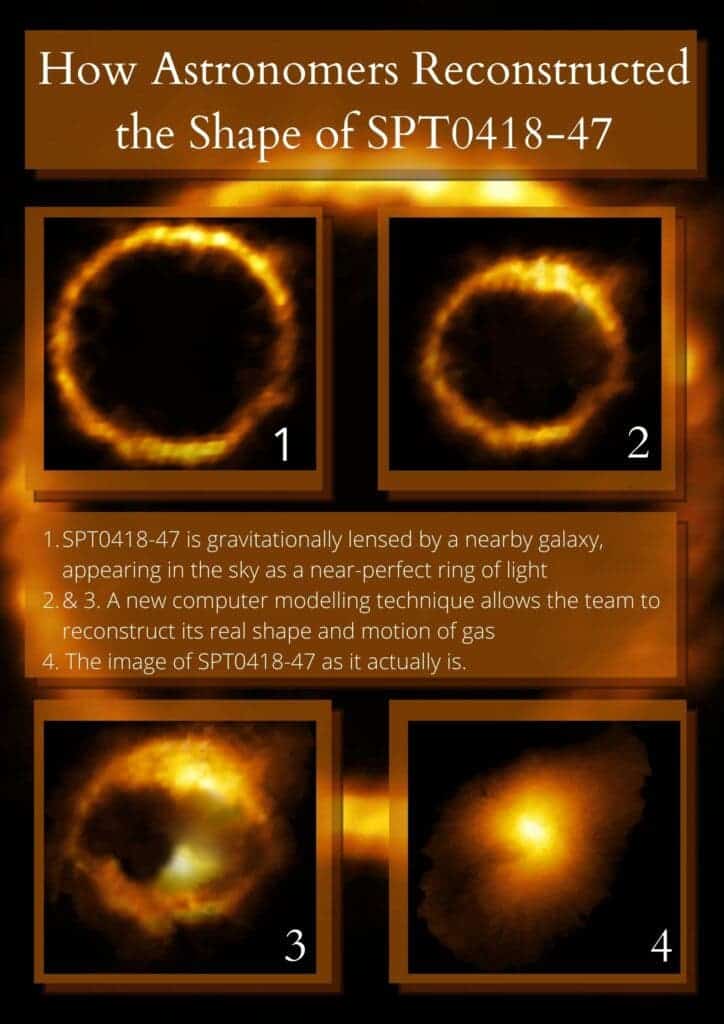A cosmic magnifying glass has revealed a Milky Way-like galaxy in the early universe that doesn’t conform to cosmologists’ expectations.

When astronomers look into the distant universe, the galaxies they have the best chance of seeing must be exceedingly bright to be seen from so far away. But cosmic magnifying glasses known as gravitational lenses make even ordinary galaxies visible from billions of light-years away.
Now astronomers have used such a lens to capture the light from a galaxy that shares some remarkable similarities to our own Milky Way Galaxy — a finding that could have profound implications for galaxy evolution.

Francesca Rizzo (Max Planck Institute for Astrophysics, Germany) and colleagues witnessed light that left a young, still-forming galaxy 12 billion years ago. That light traveled for 9 billion years before it passed by a foreground galaxy that, as chance would have it, sits right between the more distant galaxy and us. The foreground galaxy’s gravity bends the light and distorts its shape. As a result, from our perspective on Earth, the distant galaxy appears as a perfect ring: an Einstein Ring.
Rizzo’s team used the Atacama Large Millimeter/submillimeter Array (ALMA) in Chile to image the glow of this galaxy’s cool dust, as well as emission associated with its star forming gas. They then reconstructed the galaxy, showing what it would look like to ALMA if there were no galactic lens distorting its shape. It’s a tricky process, but the fact that the distorted galaxy is a complete Einstein ring helps, Rizzo says, as it leaves less wiggle room in the reconstruction.

The digitally restored galaxy is small — roughly 10 times smaller than the Milky Way — and furiously forming stars, at a rate about 100 times the star formation in our own galaxy. So far, so expected: Galaxies in the early universe were only beginning to grow, so astronomers would predict that they’d be small and bursting with new stars.
Nevertheless, the galaxy, which goes by the moniker SPT0418–47, is surprisingly like the Milky Way in its shape and behavior. Like our galaxy, it’s a disk galaxy with a bulge. And — quite unexpectedly — rotation largely directs its gas motions. Rotational motions dominate over random motions in this galaxy by a ratio of about 10:1. These results appeared August 12th in Nature.

Cosmological simulations have taught astronomers to expect fluffy disks in the early universe, with lots of other forces contributing to their gas motions besides rotation. For example, new stars give off radiation that pushes gas outward and supernovae blast gas away, too. Likewise, a gas-guzzling black hole at the galaxy’s center could make plasma jets that disrupt the rotation of gas around the galactic center. But such forces don’t seem to disrupt this galaxy; its disk is rotating as calmly as the Milky Way’s.

Making this comparison to cosmological simulations isn’t so simple, though, cautions Marcel Neeleman (Max Planck Institute for Astronomy, Germany). “It remains very difficult for cosmological simulations to actually measure the ratio of rotational motion to random motions,” he says. “To correctly measure this quantity for comparison with the data requires simulations to model the cold gas, which most simulations (including the TNG50 simulation quoted in this paper) do not do.”
That said, Neeleman thinks that if these findings can be replicated in a larger sample of galaxies in the young universe, we may indeed need to take another look at what we think we know about how galaxies evolve.
Cosmological simulations used to have galaxies forming too many stars early on, Neeleman explains. Current simulations solve that problem by including additional known processes, like the aforementioned gas-guzzling black hole and the blowback associated with newborn stars. Such feedback would prevent the gas from making too many stars. It would also stir up the gas, making it turbulent.
“However, if the gas is not turbulent, this is not the reason why simulations without feedback produce too many stars early on,” Neeleman says. Maybe star formation and feeding black holes still play a role, but don’t stir up the cooler gas. Or maybe the role of feedback isn’t as important early on as we thought.